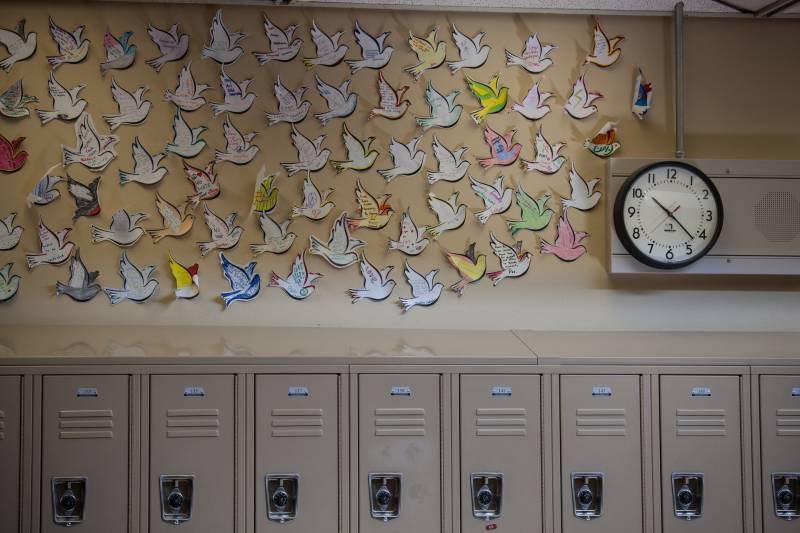As the coronavirus bears down on Northern California, schools have begun closing, while districts are still scrambling to prepare. After the Centers for Disease Control and Prevention urged education officials to plan for extended closures, local school leaders working to lay the groundwork for remote learning are bumping up against complex logistics and equity issues.
In San Francisco, Lowell High School has closed and canceled school events after a student’s relative tested positive for the virus. The campus will stay closed until further notice. In Oakland, Aspire Monarch Academy, a charter school, closed through the end of the week to “assess the risk presented by a staff member with potential, but not confirmed, exposure to the coronavirus,” according to the Oakland Unified School District.
While children seem to be at low risk of getting seriously ill themselves, they could spread the virus to others.
According to the Alameda County Public Health Department, a single presumptive positive case of the virus among students or staff could trigger a recommendation to close for up to 14 days. The department released a guidance document for schools Friday.
“Expect that this is going to happen,” said Alameda County Office of Education spokesperson Michelle Smith-McDonald. “Don't know who, don't know where, but expect that we're going to have confirmations as we begin to test more people.”
The California Department of Education issued updated guidance Thursday emphasizing that decisions to close schools are made at the local level and CDE will not be providing directives.
"In the case of COVID-19," the letter reads, "the decision to close a school would either come from the school and/or district, or ideally from their local county public health officials."
In Alameda County, public health officials say they'll be working in partnership with schools on these decisions, but they stress that school and district leaders hold ultimate responsibility for closures.
"If a significant COVID-19 exposure occurs on a school site, [Alameda County Public Health Department] will work closely with school and school district administration to evaluate risk and determine steps to protect students, staff, and families by preventing the spread of disease," a department spokesperson said in a statement.
In addition to determining when to close, schools must also consider alternative educational plans and it's proving no small task. Berkeley Unified School District officials held a shutdown contingency meeting late this week and there were more questions than answers.
“Like many districts in California and probably around the country, we currently have no process in place to accommodate distance learning at this kind of a scale,” said district spokeswoman Trish McDermott. “There are a lot of challenges.”
Not all students have internet access she says, pointing out the district serves students who are homeless or whose families can’t afford home internet.
Like other districts, Berkeley has assembled a team of administrators to develop contingency plans and assess distance learning options.
Some education organizations have stepped in to offer advice, and districts are looking to one another for help. “Everyone is sharing their best practices and their ideas,” McDermott said. “We're all facing similar challenges, and the situation is just moving very quickly.”
In Sonoma County, where fires and floods have forced emergency closures in the past few years, schools may have a leg up.
At The Healdsburg School in Sonoma County, which briefly closed earlier this week out of concerns over the virus, teachers had begun collaborating on academic continuation plans a week earlier. On the day of the closure, teachers conveyed lesson plans to parents, or in the case of middle school students, directly to students via Google Classroom.
One kindergarten teacher recorded a video of herself reading a story and uploaded it to YouTube for parents to show to her students at home. At the middle school level, teachers and students turned to Google Classroom to continue instruction, as well as lessons from Khan Academy.
Carrie Smith, associate head of school at The Healdsburg School, says she’s gotten positive feedback from families about the approach. “They appreciate our clear communication and quick actions and the access to the curriculum so students can still continue with their learning at home.”

